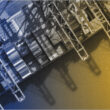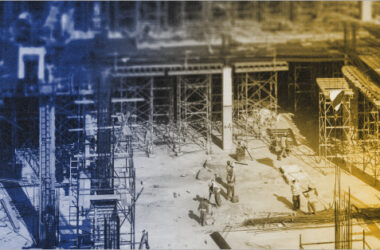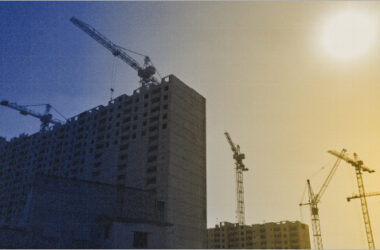If you own an infrastructure project, hat’s off to you! This is because contributing towards building India’s future is no small feat. In India, the infrastructure sector is a pivotal driver of economic growth and development. From towering skyscrapers to sprawling highways, infrastructure projects require immense planning, resources, and yes, a healthy dose of risk management. Investing in infrastructure projects comes with inherent risks, ranging from construction delays to unforeseen events like natural disasters. To mitigate these risks and safeguard investments, you need the protection offered by Erection All Risk (EAR) Insurance.
In this blog today, we will explore how the erection all risk insurance plays a crucial role in safeguarding those investments. We will break down the benefits it provides, and ultimately, how it empowers you to build with confidence, knowing your project is shielded against unexpected challenges. Stay tuned!
The Role of erection all risk insurance in Safeguarding Investments in India’s Infrastructure Projects
The role of erection all risk insurance India in safeguarding investments in infrastructure projects can be explained through the following points:
- Comprehensive Coverage: Infrastructure projects often involve complex construction activities spanning multiple phases and locations. erection all risk insurance provides coverage against a wide range of risks encountered during the erection, installation and testing phases of infrastructure projects. These include accidental damage, fire, theft, vandalism and natural disasters. This comprehensive coverage provides peace of mind to investors, enabling them to focus on project execution without the constant worry of unforeseen setbacks.
- Risk Mitigation and transfer: Erection all risk insurance India plays a vital role in risk allocation and management. Infrastructure projects entail collaboration among multiple stakeholders, including investors, contractors, subcontractors and suppliers. Each party assumes specific risks as per their contractual agreements. Erection All Risk Insurance helps distribute these risks effectively by providing a mechanism for transferring liabilities to insurance providers. This risk-sharing arrangement promotes greater transparency, accountability, and cooperation among project participants, thereby enhancing overall project resilience.
- Financial Stability: EAR insurance fosters financial stability and project sustainability. Large-scale infrastructure projects require substantial capital investments. Any disruption or loss during the construction phase can have significant financial implications. By transferring risks to insurance companies, investors can protect their capital investments and ensure project funding remains intact even in the event of unforeseen contingencies. This financial security not only safeguards the interests of the investors but also enhances the attractiveness of infrastructure projects to lenders and financiers.
- Timely Completion & delivery: Construction delays due to accidents, equipment breakdowns, or legal disputes can lead to cost overruns and reputational damage. With an erection all risk insurance policy in place, project stakeholders can expedite the resolution of claims and disputes, thereby minimizing disruptions and keeping the project on track. Additionally, insurance coverage incentivizes contractors to adhere to stringent quality and safety standards, reducing the likelihood of incidents that could hamper project progress.
- Compliance and Regulatory Requirements: Many government regulations and contractual agreements require the inclusion of insurance provisions in infrastructure projects to protect public interests and ensure project sustainability. Erection all risk insurance helps project developers and contractors meet these regulatory obligations while demonstrating their commitment to responsible risk management practices.
- Confidence for Foreign Investors: The availability of erection all risk insurance fosters investor confidence and promotes foreign direct investment (FDI) in India’s infrastructure sector. International investors often prioritize jurisdictions with robust risk mitigation mechanisms, including comprehensive insurance coverage. By offering EAR insurance as a standard practice, India can attract foreign investors and bridge the infrastructure funding gap.
- Project Sustainability: Erection all risk insurance contributes to the sustainability of infrastructure projects by providing financial security and promoting adherence to quality and safety standards. This ensures that projects are completed on time, within budget, and with minimal disruptions, thereby maximizing their long-term impact on economic growth and development.
Conclusion:
From the discussion above, we have seen how Erection All Risk Insurance in India plays a vital role in safeguarding investments and ensuring the success of India’s infrastructure projects. By providing comprehensive coverage, facilitating risk allocation, and promoting financial stability, this insurance contributes to project resilience, sustainability, and economic prosperity. As India continues its journey towards infrastructural transformation, integrating erection all risk insurance into project planning and execution will be instrumental in unlocking the sector’s full potential and driving inclusive growth.








